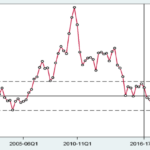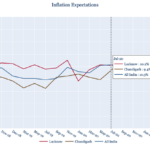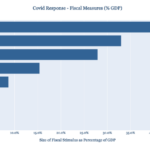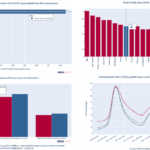WPI Inflation: A Jump Fueled by Low Base
The Ministry of Commerce and Industry released the index numbers for wholesale price in India for the month of March 2021 on 15 April 2021. These provisional numbers for March (the final numbers are released after two months), show the headline Wholesale Price Index (WPI) Inflation number at a 101-month high of 7.39% (see Figure 1). WPI Inflation was recorded at 7.4% in October 2012.
“The prices of crude oil, petroleum products and basic metal substantially increased in March 2021 as compared to the corresponding month of last year,” says the press release.
What is Wholesale Price Index?
The Wholesale Price Index is an index of based on the prices of a basket of goods at the wholesale level. WPI does not include services. According to Ministry of Statistics and Programme Implementation (MoSPI), “In many cases, these prices correspond to farm-gate, factory-gate or mine-head prices; and in many other cases they refer to prices at the level of primary markets, secondary markets or other wholesale or retail markets.”
WPI inflation is the change in this index over the same period last year. Therefore, WPI inflation in March 2021 represents the change in WPI in March 2021 over March 2020.
Figure 1: WPI Inflation
What makes the WPI?
All the goods included in the WPI are divided into four parts, viz. Primary Articles, Fuel and Power, Manufactured Goods, and Food Index. Food Index includes food articles from the Primary Articles group and food products from the Manufactured Goods group.
Primary Articles carry a weight of 22.62% in WPI, Fuel and Power carry a weight of 13.15%, Manufactured Goods carry a weight of 64.23% while Food Index carries a weight of 24.38%.
Figure 2: WPI Components
The sharp rise in WPI Inflation
Two prominent reasons for the sharp rise in WPI inflation in March 2021 are a rise in prices of crude oil and a low base effect.
For March 2021, the base is March 2020, the month when India entered the lockdown. WPI Inflation in March 2020 had declined to 0.42%. The low WPI Inflation in March 2020 was on the back of a decline in the index for Fuel & Power while the index for Manufactured Goods nearly remained unchanged. March 2020 therefore represented the beginning of the crash of WPI Inflation in India in 2020 as the Covid-19 pandemic and lockdowns hit.
The ministry press release notes, “The prices of crude oil, petroleum products and basic metal substantially increased in March 2021 as compared to the corresponding month of last year.” This brings us to the second reason why WPI Inflation has jumped sharply in March 2021.
Mineral Oils (a part of the Fuel & Power group) carry a weight of 7.94 in the WPI and crashed by 8.74% in March 2020 (petrol, a sub-part of Mineral Oils, crashed by 6.86%). In March 2021, Mineral Oils show an inflation of 17.99% while petrol shows an inflation of 18.48%.
Global oil prices crashed in March 2020 thanks to a price war between Saudi Arabia and Russia. With a fall in global crude demand since January 2020 (in the backdrop of the Covid-19 pandemic), Saudi Arabia and Russia failed to reach an agreement on production cuts, and this led to a crash in crude prices. These crude prices eventually turned negative in April, meaning producers were willing to pay buyers to take crude oil off their hands and save them storage costs. From $32.01 in March 2020, Brent crude oil barrel prices have increased to $65.41 in March 2021, leading to an increase in prices of Mineral Oils in WPI.
A similar tale is seen in ‘Manufacture of Basic Metals’ in the Manufactured Goods group. The sub group carries a weight of 9.64 and from -4.59% in March 2020, it has seen a jump of 16.6% in March 2021, thereby also pushing up the index for Manufactured Goods.
WPI Inflation had declined to 0.42% in March 2020 and had hit negative territory in the subsequent months. It was -1.57% in April, -3.37% in May, -1.81% in June, and -0.25% in July. Similarly, Fuel and Power sub-group also crashed sharply in the months following March 2020. Therefore, the two main reasons behind a sharp increase in WPI Inflation in March 2021, will also be true in the coming few months and therefore this trend is likely to continue.
The pandemic question
India entered the lockdown phase in March 2020 and the subsequent battle with the pandemic affected WPI Inflation in the country. With the second wave of the pandemic well and truly underway, the changes in demand and supply brought by the spread of infections will likely impact the WPI once again. Yes, the sharp jump in WPI inflation in March 2021 is partly driven by the low base effect but it does raise concerns about how the situation may evolve in the coming months.
If you wish to republish this article or use an extract or chart, please read CEDA’s republishing guidelines.







